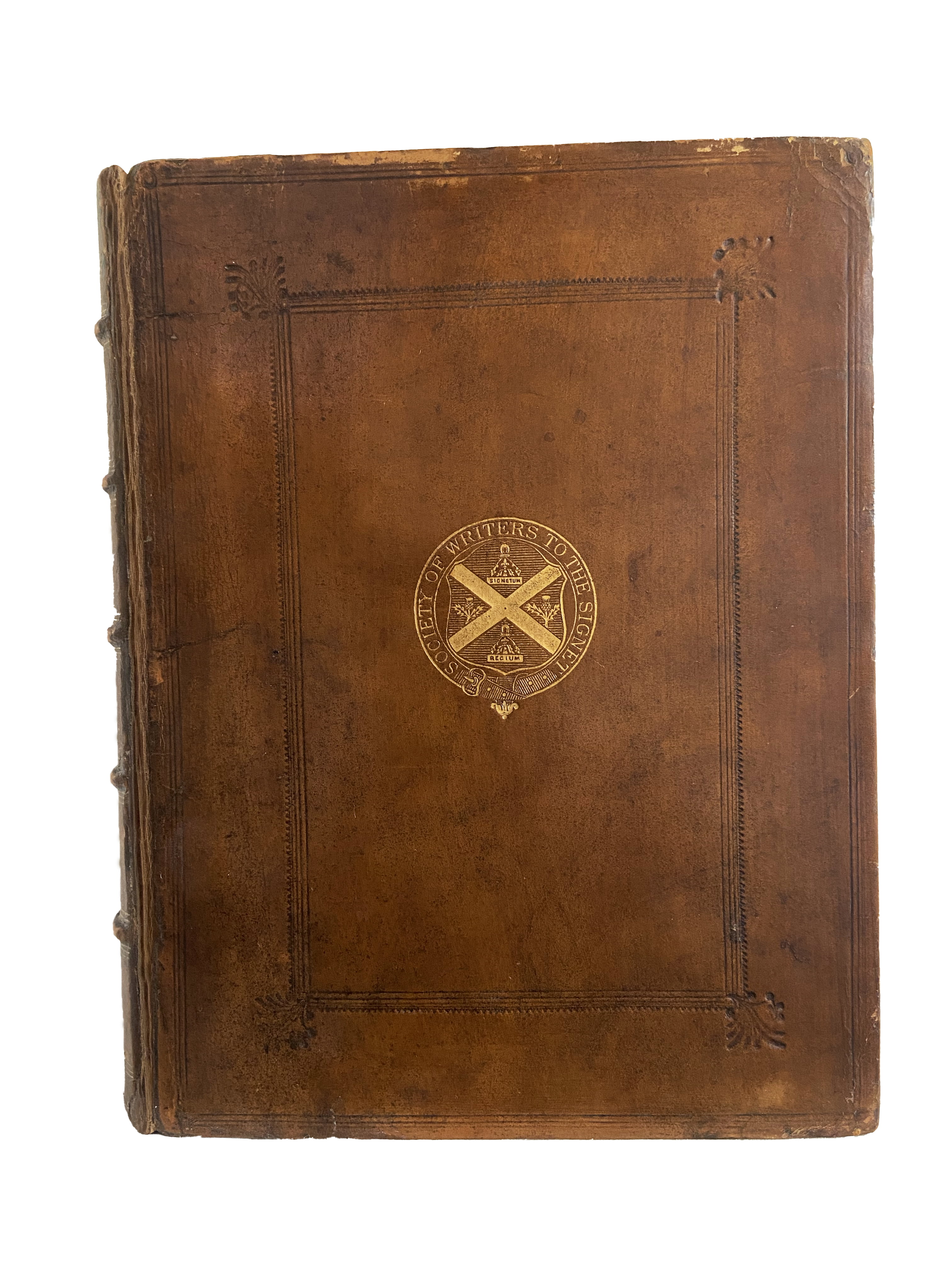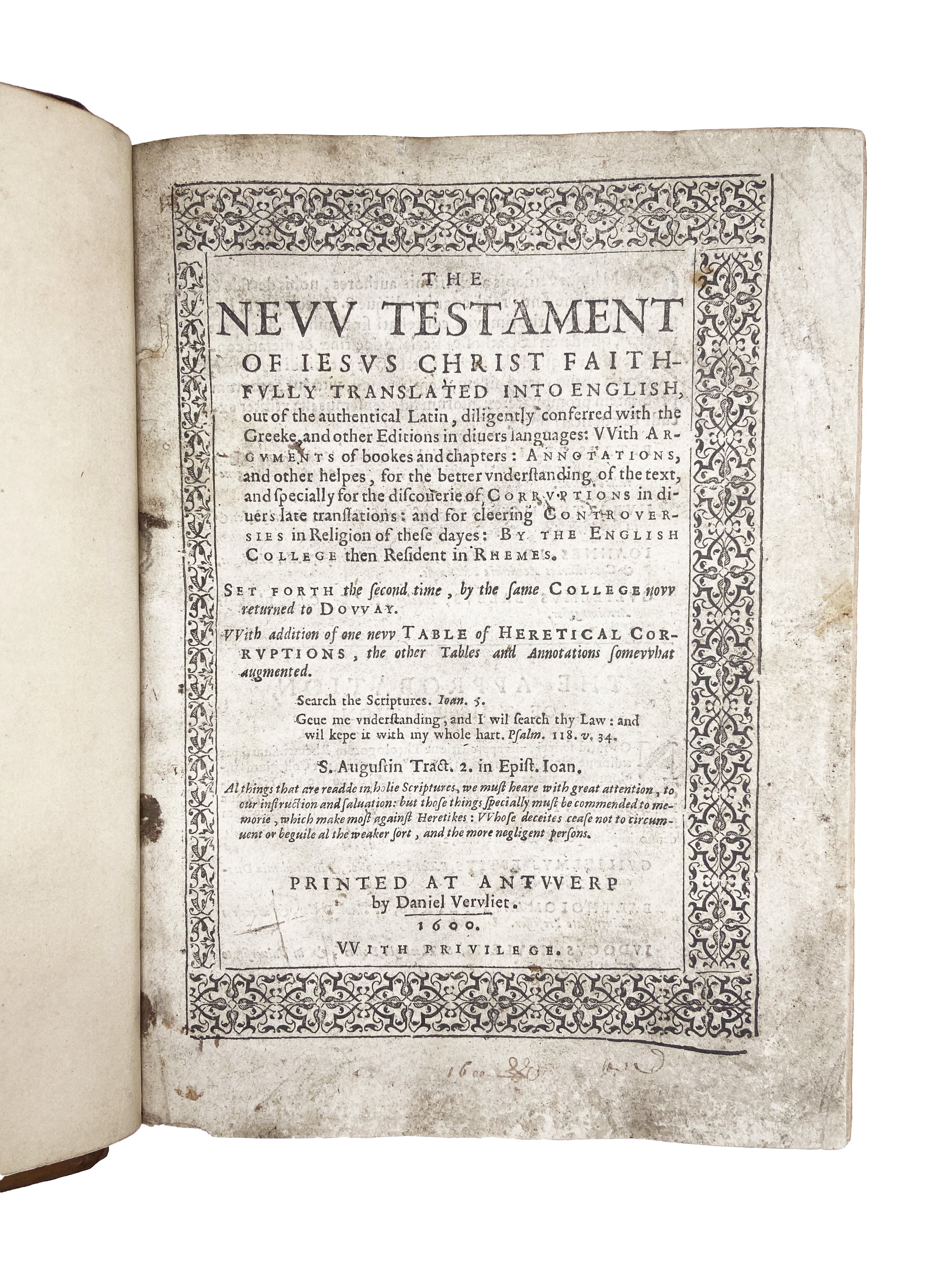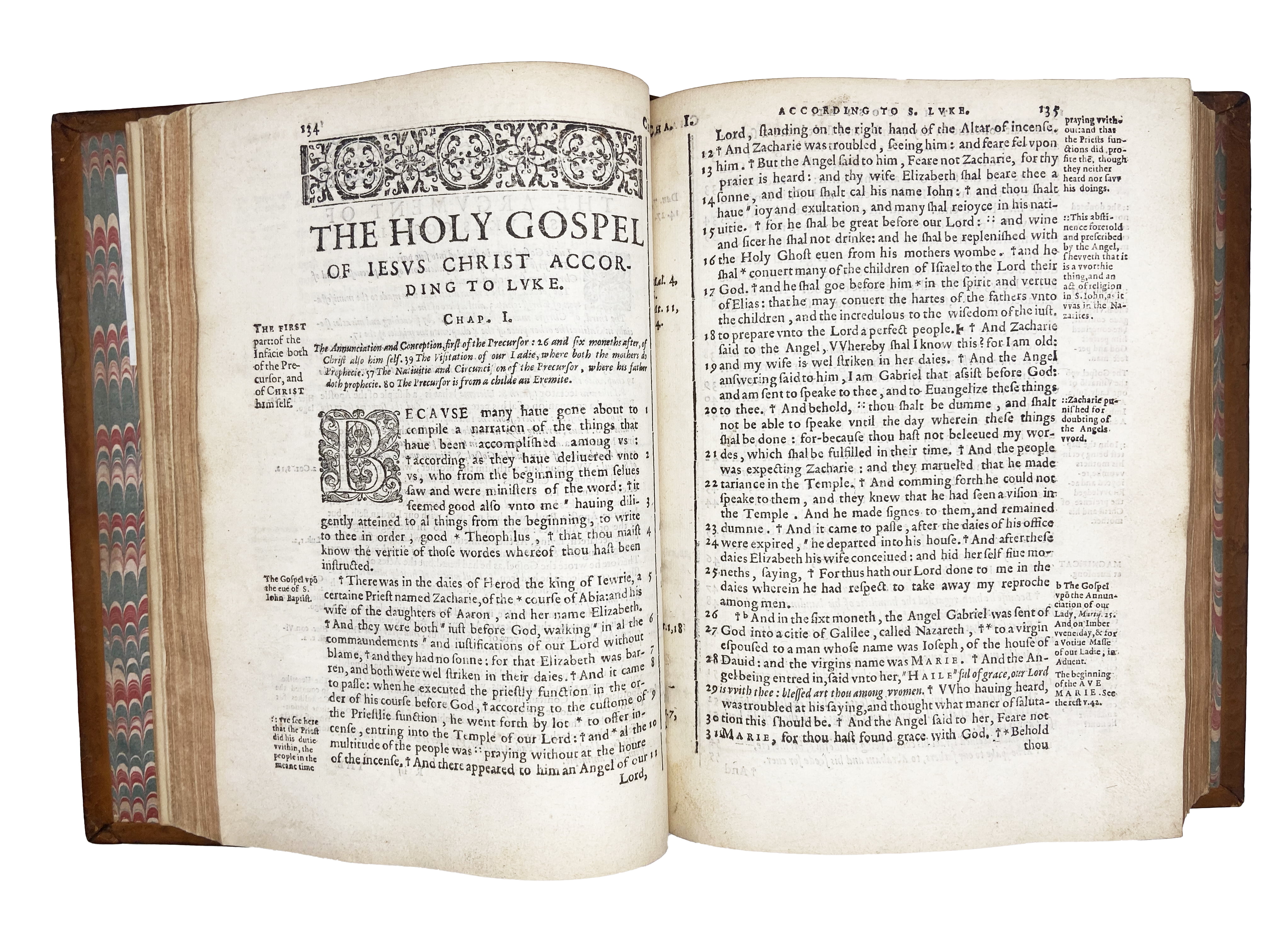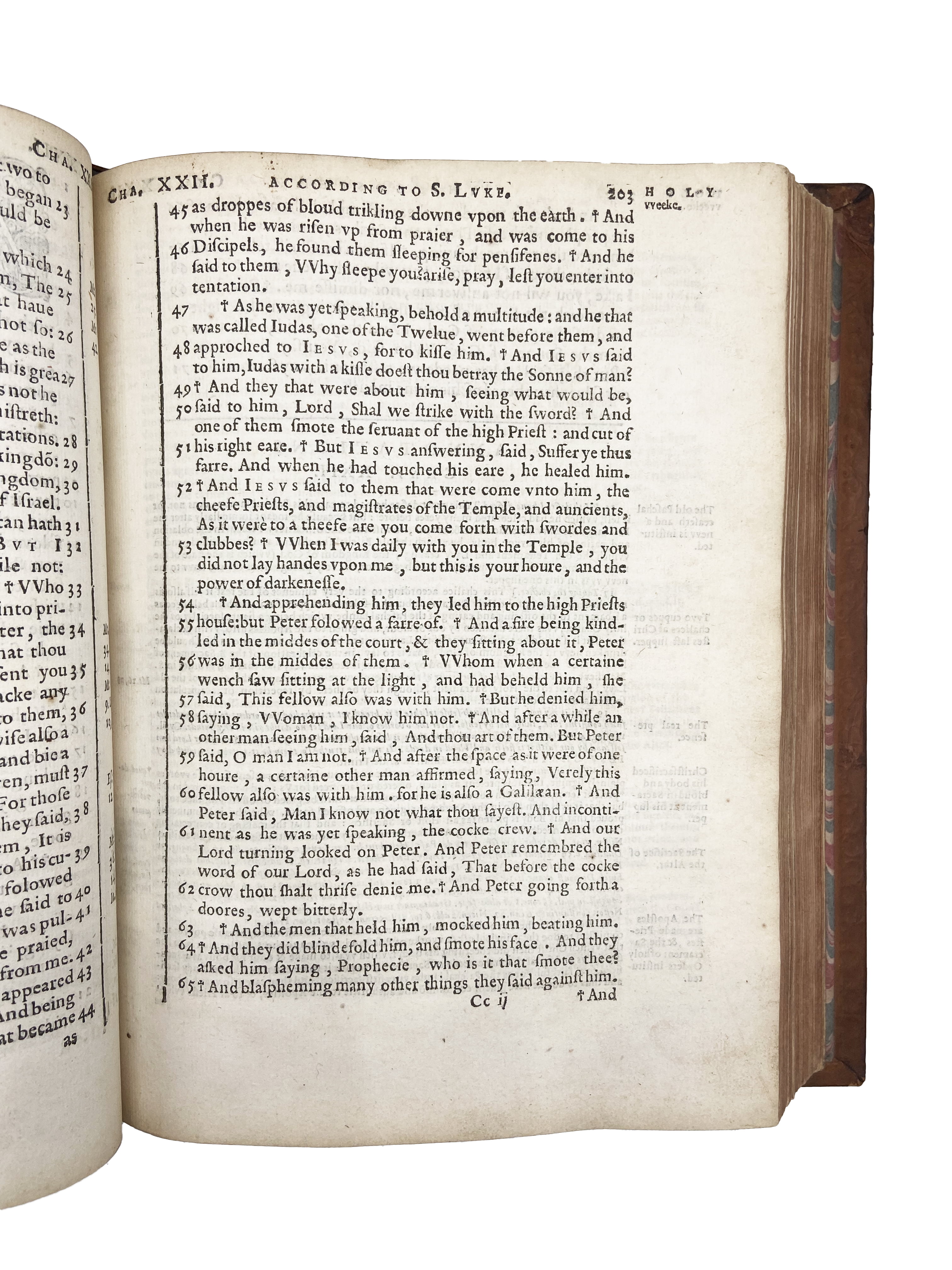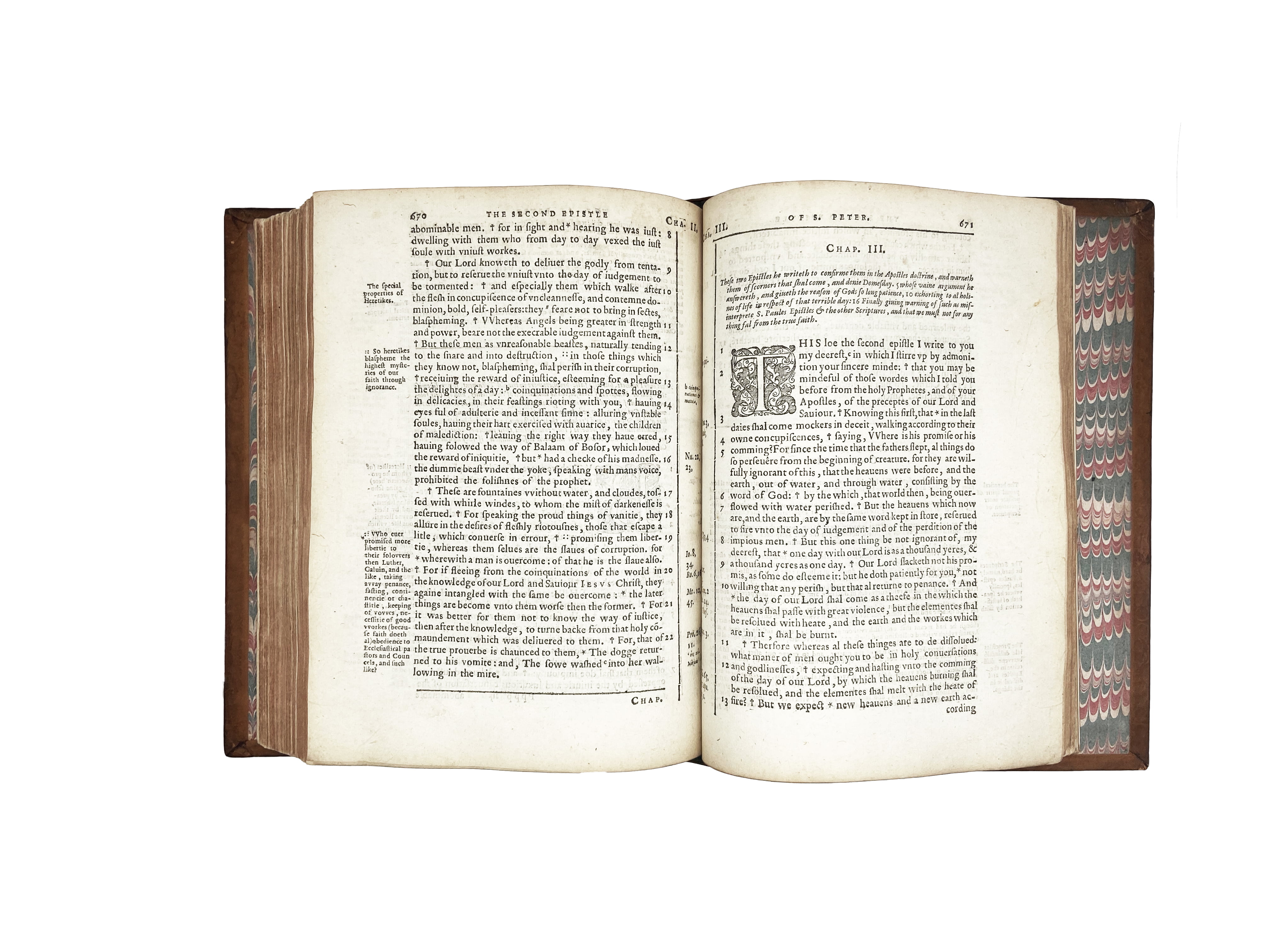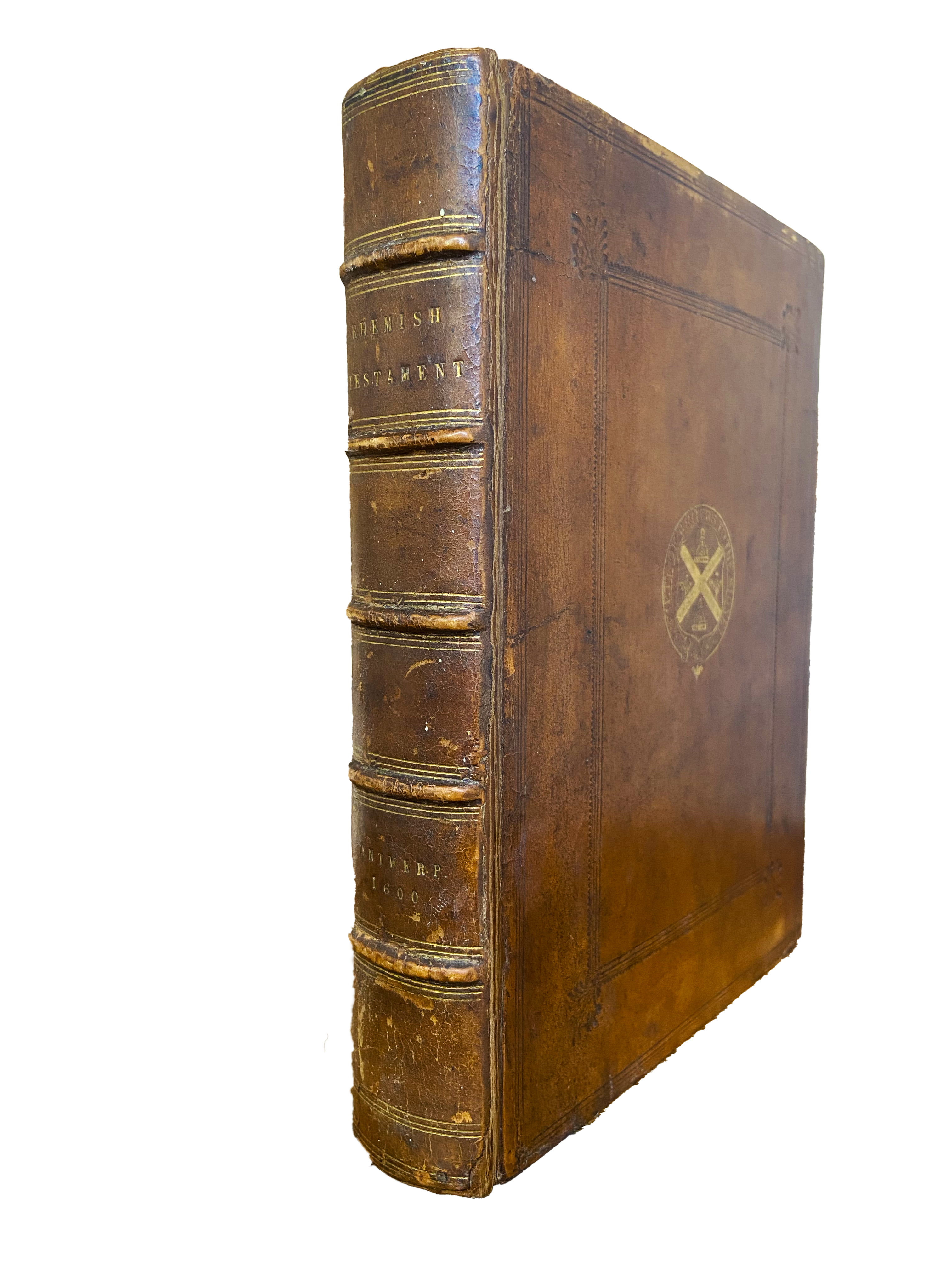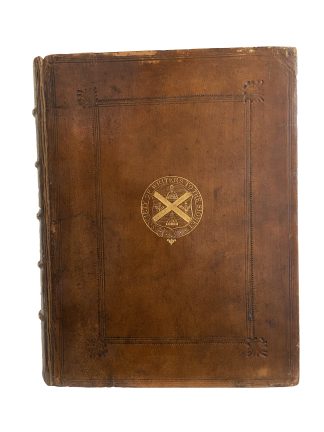[BIBLE.] THE NEW TESTAMENT
THE NEW TESTAMENT of Jesus Christ: faithfully translated.
Antwerp, Daniel Vervliet, 1600.£4,250.00
4to. pp. [xxxvi], 745, [xxvii]. a-d⁴, e², A-5D⁴, 5E². Roman letter, some italic, woodcut initials, woodcut and typographical head and tail pieces, title within ornate typographical border, bookplate on pastedown and blind stamp on flyleaves of M. R. Carter. Title and verso of last dusty, contemporary mss. at foot of former, occasional marginal thumbs mark, the odd marginal spot or mark, general light age yellowing. A good, clean copy, in later calf, covers triple blind ruled to a panel design blind fleurons to outer corners, gilt arms in roundel of the ‘Society of Writers to the Signet’ on covers, rebacked, spine laid down, a.e.r. extremities a little rubbed. In slip case.
Rare second edition of the Roman Catholic version of the New Testament, with extensive commentary and notes, first published at Rheims in 1582, here revised with additions such as the ‘Table of Heretical Corruptions’. It remained the standard and virtually the only English Catholic bible for some four hundred years. (The Old Testament followed in 1609-10; although it was finished considerably earlier it was not published for lack of funds). “The work of preparing such a version was undertaken by the members of the English College at Douai, in Flanders, founded by William Allen (afterwards cardinal) in 1568. The chief share of the translating was borne by Dr. Gregory Martin, formerly of St. John’s College, Oxford. His text was revised by Thomas Worthington, Richard Bristowe, John Reynolds, and Allen himself — all of them Oxford men. A series of notes was added, designed to answer the theological arguments of the Reformers; these were prepared by Allen, assisted by Bristowe and Worthington.The object of the work was, of course not limited to controversial purposes; in the case of the New Testament, especially, it was meant for pious use among Catholics. The fact however, that the primary end was controversial explains the course adopted by the translators. In the first place they translated directly, not from the original Hebrew or Greek, but from the Latin Vulgate of St. Jerome. This had been declared authoritative for Catholics by the Council of Trent; but it was also commonly admitted that the text was purer than in any manuscripts at that time extant in the original languages. Then, also, in the translation, many technical words were retained bodily, such as pasch, parasceve, azymes, etc. In some instances, also where it was found difficult or impossible to find a suitable English equivalent for a Latin word, the latter was retained in an anglicized form. Thus in Phil., ii, 8, we get “He exinanited himself”, and in Hebrews 9:28, “Christ was offered once to exhaust the sins of many”. It was considered that an ordinary reader, finding the word unintelligible, would pause and inquire its meaning and that this was preferable to satisfying him with an inadequate rendering.” Catholic encyclopaedia.
The notes take up a good deal of the volume and have both a polemical and patristic character. They also offer insights on issues of translation, and on the Hebrew and Greek source texts of the Vulgate. From the point of view of scholarship, the Douay-Rheims Bible is seen as particularly accurate. Although not officially mentioned as one of the versions to be consulted, it is now recognized to have had a large influence on the King James Version. The Douai version was printed in very small quantities for export to England and suffered from persecution whilst there, not to mention centuries of use; complete copies in good condition are rare.
STC 2898. Darlow & Moule I 198. Allison and Rogers (rev. edn.) II 174. Lowndes I 185. ESTC S102510.

